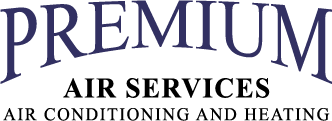
You shouldn’t be forced to sacrifice comfort or empty your wallet to keep your home at a pleasant temperature during muggy weather.
But what is the right temp, exactly? We go over recommendations from energy experts so you can select the best temperature for your residence.
Here’s what we suggest for the most energy-efficient setting for air conditioning in Tomball.
Recommended Thermostat Settings for Summer
Most families find using the thermostat at 72-73 degrees is most comfortable. However, if there’s a sizeable difference between your indoor and outdoor temps, your AC bills will be larger.
These are our suggestions based on the U.S. Department of Energy (DOE) and ENERGY STAR®.
While at home: 78 degrees. While that appears too high, there are approaches you can keep your home refreshing without having the air conditioner on frequently.
Keeping windows and window treatments closed during the day keeps cool air where it should be—within your home. Some window treatments, such as honeycomb shades or plantation shutters, are created to provide more insulation and enhanced energy conservation.
If you have ceiling fans in your home, the DOE says you can increase thermostat settings about 4 degrees higher without sacrificing comfort. That’s because they cool by a windchill effect. Since they cool people, not areas, shut them off when you move from a room.
If 78 degrees still feels too uncomfortable initially, try running a test for approximately a week. Begin by increasing your thermostat to 78 degrees while you’re at your house. Then, steadily lower it while adhering to the ideas above. You might be astonished at how refreshed you feel at a warmer temperature setting.
While away: 88 degrees. There’s no rationale for keeping the air conditioning running all day while your house is vacant. Turning the setting 7–10 degrees higher can save you an estimated 5–15% on your air conditioning costs, according to the DOE.
When you get home, don’t be tempted to put your thermostat below 78 to cool your home faster. This isn’t effective and usually leads to a bigger cooling cost.
A programmable thermostat is a helpful approach to keep your temperature controlled, but you need to set programs. If you don’t utilize programs, you run the risk of forgetting to move the set temperature when you go.
If you’re looking for a convenient remedy, think about installing a smart thermostat. This thermostat connects with your phone, so it is aware when you’re at your house and when you’re away. Then it instinctively changes temperature settings for the biggest savings. How much exactly? Typically $180 each year on heating and cooling, according to ENERGY STAR.
Another perk of having a smart thermostat? You can use your phone to keep an eye on and regulate temperature settings from nearly anywhere.
While sleeping: Around 70 degrees. While ENERGY STAR recommends 82 degrees, that could be unpleasant for many families. Many people sleep better when their sleeping area is cold, so that’s why the National Sleep Foundation recommends 60–67 degrees. But that might be too cool, based on your clothing and blanket preference.
We suggest running a similar test over a week, moving your temp higher and gradually lowering it to locate the right temperature for your residence. On cool nights, you might discover keeping windows open at night and running a ceiling fan is a superior idea than operating the air conditioning.
More Approaches to Conserve Energy This Summer
There are added methods you can spend less money on energy bills throughout hot weather.
- Upgrade to an energy-efficient cooling system. Central air conditioners only last about 12–15 years and lose efficiency as they age. An updated air conditioner can keep your residence more comfortable while keeping utility expenses down.
- Book yearly air conditioner maintenance. Regular air conditioner maintenance keeps your unit operating smoothly and may help it work more efficiently. It may also help prolong its life span, since it allows professionals to discover seemingly insignificant problems before they cause a major meltdown.
- Switch air filters often. Read manufacturer instructions for switching your air filter. A clogged filter can result in your system short cycling, or run too much, and increase your utility.
- Measure attic insulation levels. Almost 90% of homes in the USA don’t have proper insulation, according to the Insulation Institute. Many southern climates should have 13–14” of attic insulation, while northern climates should have 16–18”.
- Have your ductwork checked. Ductwork that has separated over time can let conditioned air into your attic, walls or crawl space. This can lead to big comfort issues in your residence, such as hot and cold spots.
- Seal cracks, doors and windows. Keep warm air in its place by plugging cracks. You can also caulk or weather strip doors to keep more cool air indoors.
Conserve More Energy During Warm Weather with Premium Air Services LLC
If you are looking to conserve more energy during warm weather, our Premium Air Services LLC specialists can provide assistance. Give us a call at 713-364-1078 or contact us online for more info about our energy-saving cooling products.
